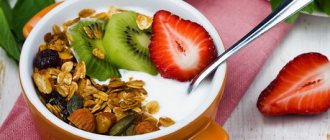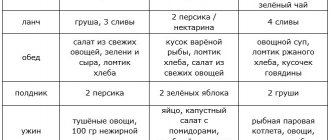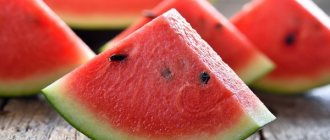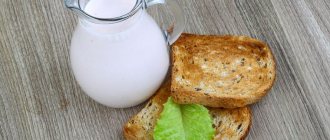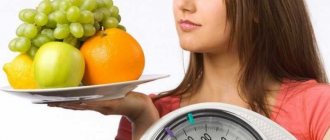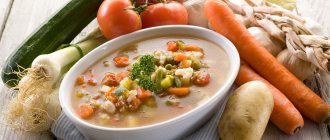While most women, and often men, suffer from extra pounds, patients with gastritis have another problem - extreme thinness. Leaving everything as it is will not work. Constant weight loss with gastritis leads to weight loss and severe exhaustion of the body. Why is the patient losing weight? How to deal with this? Let's answer these and other questions.
Gastritis can cause severe weight loss. How to understand that thinness has become dangerous to health? It is necessary to calculate the body mass index (BMI). The calculation can be carried out using the formula: m/h², i.e. it is necessary to divide a person’s body weight in kilograms (m) by the square of height (h²) in meters. If you get a figure from 18.5 to 25, then there is no need to worry, your weight is still normal. A BMI below 18.5 cm shows that there is already a shortage of kilograms, and below 16 - serious pathological processes have begun in the body.
The age of the patient is also important here. In young people, weight fluctuations are acceptable, since studying and playing sports may result in additional calorie consumption. In addition, changes in hormonal levels often affect weight. If mature or elderly people lose weight, and there were no dietary restrictions or emotional stress, then sometimes this is a symptom of a dangerous disease.
Briefly about gastritis, abdominal pain and timely diagnosis
By the term “gastritis,” doctors mean a whole group of different diseases, the symptoms of which are very similar, but arise for a variety of reasons. That is why, if any pain appears in the stomach, right or left hypochondrium, or peritoneum, you need to visit a gastroenterologist. Self-diagnosis and taking appropriate medications from the medicine cabinet can cause a worsening of the condition in a variety of diseases with similar symptoms: gynecological disorders in women, when they feel discomfort in the stomach area; for heart ailments, when the nervous system signals them with abdominal pain; as well as problems with other internal organs that only a doctor can identify. If you visit the clinic in a timely manner, a diet for weight loss for gastritis prescribed by a specialist will help not only reduce weight, but also restore the health of the stomach, its mucous membrane, which protects the walls of the organ.
Why is thinness dangerous?
Excess weight is harmful, but severe weight loss with gastritis and ulcers can have negative consequences:
- An exhausted woman cannot have children, her menstruation stops, and men develop impotence.
- The human immune system weakens, so he suffers more often from various diseases.
- There is a displacement of internal organs, which causes disruptions in their functioning.
- The muscles atrophy.
- Injuries to bones and joints are possible, since they are not protected by a layer of fat.
- If anorexia appears, even death cannot be ruled out (in 15% of cases).

What causes gastritis? Symptoms of acute and chronic forms of the disease
The cause of painful discomfort can be: poisoning with toxins from eating foods contaminated with microorganisms, a burn from an unusually spicy or sour dish, from eating fast food for a long time, eating dry food, smoking, alcohol or stress, as well as from self-abuse of various medications. Acute gastritis is characterized by pronounced symptoms: severe pain, nausea, bloating, weakness and other unpleasant sensations. These signs appear due to mechanical or chemical damage to the inner lining of the stomach, when the caustic secretion injures the tissue, which causes an inflammatory process. This disease of the mucous membrane, with proper treatment and proper nutrition - a gentle diet menu for weight loss for gastritis, agreed with the doctor - is healed quite quickly and safely. The disease, which has taken a chronic form, is dangerous due to recurrent inflammation of the gastric mucosa, in which a person experiences infrequent, tolerable pain, mild nausea, and other mild signs of digestive disorders. At the same time, the stomach generally copes with its function, but a person often gains weight, compensating for the discomfort with various “goodies.” The chronic form of gastritis takes longer to treat than the acute form; it requires long-term self-control when choosing suitable foods, as well as adherence to a diet.
What is the difference between high and low stomach acidity?
When choosing a way to lose weight with gastritis, you need to take into account the type of disease, which depends on the concentration of hydrochloric acid produced by the glands of the stomach. Normally, its pH corresponds to values between 1.5 and 2.0 units. With increased or decreased levels of hydrochloric acid, a person experiences various discomforts. Increased acidity can be indicated by frequent heartburn that occurs after meals, paroxysmal aching pain between them and other signs. People with low acidity of gastric juice complain of flatulence, bloating, unpleasant belching with the smell of rotten eggs, a metallic taste in the mouth and heaviness in the stomach even after eating a minimal amount of food.
Principles of nutrition for weight loss if you have a sore stomach
Gastroenterologists recommend that patients with chronic gastritis do not focus on any specific diet, but follow the basic rules of rational nutrition used for weight loss. This will allow you to simultaneously lose weight and reduce inflammation of the gastric mucosa.
- Eliminate everything fried, smoked, pickled, and canned from your diet. It is preferable to boil, bake, stew, cook in a slow cooker or steam.
- Limit salt intake to 5-6 g per day.
- Put aside spicy spices until better times - they irritate the gastric mucosa.
- Eat only low-fat fish (grenaris, pollock, tilapia, perch) and meat (rabbit, veal, turkey), and low-fat dairy products.
- Eat small portions, but more often - 5-6 times a day. Don't go to bed on an empty stomach. A light late dinner will be useful both for restoring mucous membranes and for weight loss, as it will eliminate the feeling of hunger at night.
- It is necessary to reduce the total energy value of food intake to approximately 1800 kcal/day. First of all, you need to limit your carbohydrate intake.
- Despite the general reduction in daily caloric intake, nutrition should be complete: contain carbohydrates, fats, proteins, and biologically active substances.
- To reduce body weight, diet should be combined with exercise. However, you should not exercise within an hour after eating, so as not to provoke the development of reflux. In addition, by exercising shortly after eating, a person burns exactly those calories that came with this food. Therefore, weight loss will not occur.
The importance of dietary nutrition for gastritis and general rules
The described gastrointestinal disease cannot be cured only with medications, ignoring the doctor’s instructions for a gentle diet. A diet for losing weight for gastritis is an essential component of complex treatment, which will require changes in eating habits and a significant restructuring of the rhythm of life. If you continue to eat the same way as before the onset of the disease, the effect of treatment may be reduced to zero. The diet is chosen depending on the type of disease, but there are also universal rules: fractional meals are encouraged (you need to eat every 3 hours in small portions, which are no more than 250-350 g); you should not feel hungry by taking long gaps between meals; It is better not to combine the first and second courses in one meal; you need to eat them separately. Food should have a comfortable temperature (20-50°), so excessively hot dishes (above 60°) should be cooled, and excessively cold ones (below 15°) should be heated. Regular consumption of food at the same time removes excess stress from the stomach and does not lead to overeating in the future, which helps to significantly adjust body weight. The drinking regime for any form of gastritis is no more than one liter per day, so as not to affect the stomach tissue, stretching it. For drinking, pure still water, herbal teas and semi-sweet compotes are recommended.
Recommendations from a gastroenterologist
A diet that promotes weight loss for gastritis is primarily a therapeutic diet. Any therapeutic diet involves restrictions on some foods, but the health of the patient who is recommended to lose weight should not suffer. And here you can’t do without the recommendations of your attending physician and nutritionist. They must select a diet for the patient, adjusting it to his condition and the characteristics of the underlying disease.
What do gastroenterologists recommend? For patients with any form of gastritis, there are unshakable rules that must be followed:
- fractional meals;
- correspondence of calorie content of food to the weight and condition of the patient;
- proper processing of products;
- drinking enough drinking water;
- compliance with restrictions on prohibited products.
If you apply the recommendations and show a certain restraint in your desire to lose weight with gastritis, then your goal is quite achievable.
What is prohibited for gastritis
Of the foods that absolutely cannot be consumed if you have a disease of the gastric mucosa, nutritionists note: fried and fatty foods, meat broths, aspic and jellied meats; semi-finished products, as they contain many artificial components that stimulate appetite and irritate the gastric mucosa; any canned food, including baby food, pickles, smoked meats and marinades; coffee and chocolate; fast food and dry snacks; low-calorie foods high in fiber (skin of fruits and berries, bran, legumes, mushrooms and others), as they require increased digestion, which is unacceptable for an affected stomach; carbonated drinks (including sparkling mineral water) and alcohol; baked goods; salt, hot sauces, herbs, hot seasonings and spices; products that activate fermentation processes. These include fermented milk drinks (for people with high levels of acidity in the stomach), figs and grapes, rye bread, sweet fruits and others. For hyperacid gastritis, it is undesirable to eat salads made from fresh white cabbage and radishes. In case of any inflammation of the gastric mucosa, sorrel, onions and garlic should not be added to the diet. In addition, dietary dishes are not allowed to be flavored with lemon juice. If you have gastritis, doctors advise not to snack on the run, not to use chewing gum, not to overeat, and not to eat in front of a TV or monitor. When telling how to quickly lose weight with gastritis, the doctor usually recommends avoiding strict mono-diets, fasting days, and strictly limited nutrition plans that promise quick results, but provoke a relapse of the disease. It is very important to follow medical recommendations and not prescribe one or another therapeutic diet on your own, since it must correspond to the type of acidity disorder and restore its balance.
Basic principles and rules for losing weight
You also need to pay attention to proper food consumption:
- Eliminate coarse, spicy and spicy foods from the diet;
- Chew each piece thoroughly. Poorly chewed food is one of the causes of gastritis. If chewing is difficult due to missing teeth, then it is necessary to solve this dental problem;
- Regulate your diet, avoid periods of fasting alternating with periods of overeating. Eat 4-5 times a day, no snacks, do not overeat. Do not eat 4 hours before bedtime.
- Do not eat food that is too hot or too cold;
- Refrain from smoking and alcohol;
- Avoid foods that require long-term digestion: vegetables with coarse fiber, strong and fatty meat broths, smoked and salted foods, lard, margarine, rye bread, sauces, legumes, garlic, onions, peppers, coffee, black tea, carbonated drinks, chips, etc.

Having set a goal to lose weight, you must adhere to the rules recommended by nutritionists. Along with dietary nutrition, physical exercise, walks in the fresh air and other active activities will be useful. Weight loss will not bring lasting results if, after a diet and a healthy lifestyle, a person returns to his old habits.
Therefore, the main principle of weight loss is changing your lifestyle and following dietary recommendations throughout your life.
What foods help you lose weight with gastritis? Methods for their preparation
In order to regain a slim figure and at the same time get rid of stomach problems, you need to pay attention to protein foods - lean meat, fish, poultry and tender rabbit meat. Lamb, pork, fatty varieties of sea fish and tough waterfowl meat should be excluded from the diet. Meat dishes on a gentle diet for weight loss are prepared from minced meat: these are meatballs, meatballs, chopped steamed cutlets. Seafood lovers are allowed to feast on mussels, shrimp and squid. Low-calorie whole milk products are suitable for people with hyperacid gastritis, and with a low concentration of hydrochloric acid in the stomach, fermented milk products can also be included in the diet. In any case, to lose weight you should avoid consuming oils and creams. Porridges with well-cooked cereals are great for breakfast and lunch. Vegetables (except for sugary and starchy varieties) are boiled or steamed, and also pureed in a blender. Lenten soups with the addition of cereals and vegetables are welcome in the diet for weight loss for gastritis. They are served with pureed ingredients, in a thick form. Fruits (except for those containing a lot of acid, bananas and grapes) are baked without peeling; they can also be served in the form of compote or jelly. In the diet of a person with a sick stomach, the gifts of nature are used only after heat treatment of each fruit to facilitate the digestion of food.
Recommended menu
We invite you to make sure that even with a combination of such serious problems as gastritis and excess weight, the diet can be varied and nutritious.
Note! Dishes are prepared using low-fat dairy products, with minimal addition of salt, butter, and spices. All desserts and sweet drinks must contain sweeteners or a small amount of natural sugar.
Monday
Breakfast: buckwheat porridge with skim milk.
Lunch: vegetable salad dressed with olive oil.
Lunch: chicken broth with poached egg, tilapia fillet on a bed of vegetables, apple jelly.
Afternoon snack: cottage cheese with cherries.
Dinner: zucchini boats with lean minced meat, fruit marmalade.
In conditions of hyperacid gastritis
If a doctor has prescribed a diet for weight loss for gastritis with high acidity, then it is worth including rabbit meat in the diet - the most preferred type of dietary meat; chicken fillet (without skin), lean veal or beef of the first category. From fish - lean types: tuna, cod, from river - pike perch or pike. Milk should be chosen with no more than 2.5% fat content, hard cheese (fat content 30-45%), without additives: “Russian”, “Kostromskoy”, “Gollandsky” (daily portion should not exceed 50 g). Eggs can only be consumed as dietary eggs (with a shelf life of less than a week), boiled. For cereals you can use rice, semolina, oatmeal. Buckwheat - only during remission. A small piece of bread should be slightly stale; You can afford dry cookies or biscuits only occasionally. Vegetables - cabbage, peeled tomatoes, zucchini, beets, carrots and pumpkin - are suitable for food only after heat treatment (except for frying). It is better to bake fruits (apples and pears without peel). The seeds are a forbidden product, but in small quantities they relieve heartburn. The fats used are cold-pressed sunflower oil or unsalted butter.
Recipes to note
Some dishes from the above menu are not very easy to prepare, but they are appetizing – and dietary! – the result speaks for itself.
Meat roll stuffed with omelette
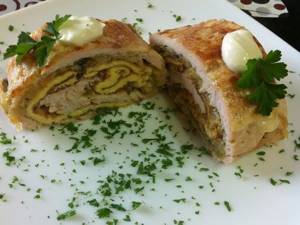
Ingredients:
- 500 g ground beef (or chicken);
- 1 onion;
- 3 eggs;
- 4 tbsp. l. skim milk;
- salt to taste.
Recipe:
- Finely chop the onion and mix with the minced meat, add the egg there.
- Using two eggs and milk, cook 2 omelette pancakes in a frying pan without oil. Salt them to taste.
- Place the minced meat in an even layer 1.5 cm thick on cling film.
- Place omelet pancakes on top. If necessary, they can be cut so that they cover the meat completely.
- Roll it into a roll using film, press it lightly and let it rest for a few minutes so that it holds its shape better.
- Place the roll on a baking sheet, seam side down, and carefully remove the cling film.
- Add a glass of water to the sheet to prevent the roll from drying out.
- Cook for half an hour at 220°C.
Barley porridge with chicken and celery
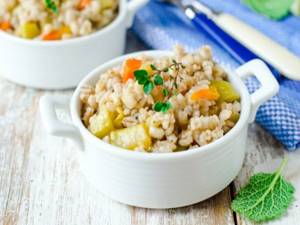
You will need:
- 1.5 cups barley;
- ¼ piece of chicken;
- 3 glasses of water;
- 1 stalk of celery;
- 1 carrot;
- 1 onion;
- salt to taste.
How to cook:
- Dice the onion and celery, grate the carrots.
- Place the vegetables in the multicooker bowl and simmer under the lid in the “Fry” mode until browned.
- Cut the chicken into small pieces, add a little salt, and add them to the vegetables. Keep covered, stirring occasionally, until the meat is half cooked.
- Add hot water to the multicooker, add barley, add salt, and stir.
- Cook in the “Porridge” mode for 20 minutes, without covering.
- When there is practically no water left, you can lower the lid and simmer the dish for another quarter of an hour in the “Warming” mode.
Menu options for every day for weight loss for people with hyperacid gastritis
For breakfast, doctors advise patients with high stomach acidity to eat well-cooked porridge, boiled or steamed vegetables. You can include a little low-fat cheese in salads made from such vegetables. For lunch, you can eat 150-200 g of fresh cottage cheese (no more than 1-2 days after production) and drink a glass of milk (up to 2.5% fat content). At lunch, the diet menu for weight loss for gastritis suggests eating milk or vegetable cream soup with cereal (150 ml), a second dish of minced meat made from dietary meat, fish or chicken, which can be boiled or steamed until cooked, and also baked in the oven. It could be a small cutlet or a couple of meatballs. For drinks, you can choose weak tea or uzvar (dried fruit compote). In the afternoon it is better to drink jelly - milk, oatmeal or fruit. For dinner, a dish of lean fish and a salad of boiled vegetables or mashed potatoes is suitable. Before going to bed, nutritionists advise drinking 100-150 ml of warm milk (with a fat content of no more than 1.5-2.5%).
Recipes for delicious dishes with photos
1. Cauliflower soup:
- One head of cauliflower
- 1 glass of milk
- 1.5 glasses of water
- 1 teaspoon flour
- 1 egg
- 2.5 teaspoons sour cream
- Salt, sugar
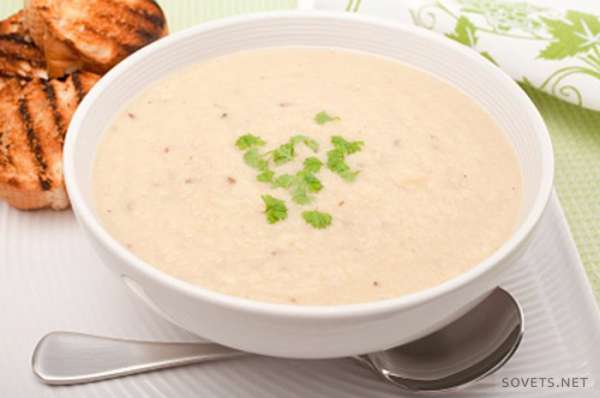
Wash the cauliflower thoroughly and divide it into small florets and cook it. Mix the cabbage broth with flour to create a white sauce. Afterwards, rub the cauliflower through a sieve, gradually adding boiled milk and a little sugar. Then stir, boil and remove from heat. Separately, mix the egg with sour cream and add to the soup, stirring slowly. Delicious cauliflower soup is ready!
- 4 tablespoons white rice
- 3 glasses of water
- 1.5 cups milk
- 1 egg
- Salt, sugar
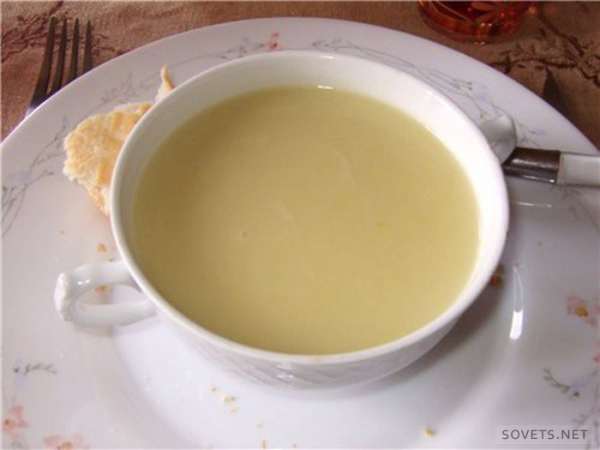
White rice is good for the stomach. Soak the rice in water, leave overnight, after rinsing thoroughly. In the morning, rinse it again before you start cooking. Cook until fully cooked. Then rub the broth through a sieve and bring to a boil. Beat the egg with milk and sugar. Gradually add the mixture to the rice, stirring the soup constantly. Add some butter. Wait for the soup to cool slightly.
3. Lazy dumplings
- Cottage cheese – 150 g
- Wheat flour – 1 tbsp
- Egg – 1 pc.
- Sugar – 1.5 teaspoons
- Sour cream – 1 tbsp
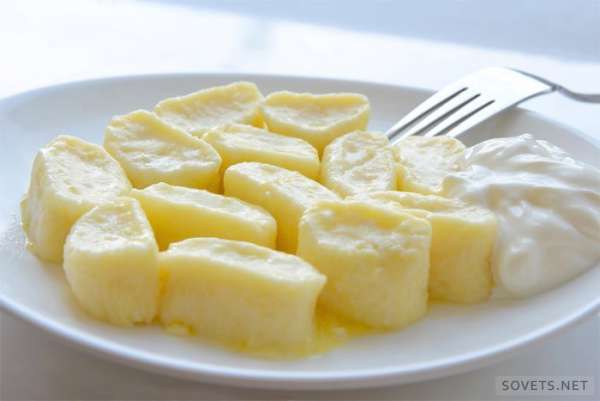
Add the egg, sugar, cottage cheese rubbed through a sieve to the flour and mix well to form one mixture. Make a small sausage from the resulting mass, cut it into pieces and cook. Drizzle with a little sour cream.
Diet for the whole day. Purpose of the diet: reduce the activity of gastric juice.
- Breakfast: egg in a bag, buckwheat porridge, weak tea. Non-sour cottage cheese is allowed.
- Lunch: Boiled potatoes, boiled meat, boiled carrots, dried fruit compote.
- Dinner: boiled fish, baked apple, weak tea with milk.
A “mashed” diet is effective for gastritis.
Menu for the whole day.
- Breakfast: egg “in a bag”, rice porridge pureed through a sieve, weak tea.
- Lunch: oatmeal pureed through a sieve, steamed meatballs, carrot puree.
- Dinner: crackers, weak tea with milk.
For gastritis with low acidity
Insufficient secretion of hydrochloric acid and digestive enzymes in patients with hypoacid gastritis leads to difficulty in digesting food. A diet for weight loss for gastritis with low acidity helps to activate the production of gastric secretions, which normalizes the digestive process and leads to noticeable weight loss. The menu for hypoacid gastritis includes: stewed and baked vegetables (cabbage, carrots, pumpkin, beets or potatoes); lean meat, fish and broths; cottage cheese and fermented milk drinks; fresh juices, fruit drinks or compotes from strawberries, plums, blueberries, apples, carrots or raspberries; porridge (except wheat and pearl barley); fresh cucumbers and herbs (excluding onions and garlic); fruits and berries in reasonable quantities - raspberries, apricots, gooseberries, black currants and citrus fruits. In contrast to the diet for “acid” gastritis, the diet for losing belly fat for gastritis with reduced secretory function has some concessions to stimulate digestion: you can eat white cabbage salad, tea with sugar, honey, lingonberries, citrus fruits, raspberries and gooseberries.
How to treat gastritis?
The basis of drug treatment for hyperacid gastritis (inflammation of the mucous membrane against the background of increased pH in the stomach) is to reduce gastric acidity. The desired effect is achieved by a number of medications:
- Antacids are medications that reduce stomach acidity, as well as adsorbing enzymes responsible for digesting food and producing hydrochloric acid (for example, pepsin). Antacids are available in the form of tablets, powders, gels and suspensions.
- alginates are drugs that, when reacting with hydrochloric acid, form a special gel covering the surface of the stomach.
To reduce pain, antispasmodics and analgesics are used. Under no circumstances should non-steroidal anti-inflammatory drugs (NSAIDs) be used for gastritis, as they have an ulcerogenic effect (provoke the development of ulcers).
Additionally, gastroprotectors protect the gastric mucosa. Like alginates, these drugs form a thin film on the inner surface of the stomach, which prevents hydrochloric acid from affecting and further damaging the mucous membrane. Gastroprotectors are often prescribed together with antisecretory drugs, since the latter themselves are capable of influencing the development of bacteria in the gastric cavity. Antisecretory drugs, such as proton pump inhibitors, reduce the secretion of hydrochloric acid.
One of the causes of gastritis is the bacterium Helicobacter pylori, which means that it is advisable to prescribe antibacterial agents during treatment. However, antibiotics have many side effects and should be used with caution in children and the elderly, pregnant women and mothers during feeding. Along with taking antibiotics, probiotics are prescribed to normalize intestinal function. Antibacterial agents always cause dysbacteriosis.
Prokinetics are drugs that accelerate gastrointestinal motility, namely, they normalize the process of moving food through the stomach and its excretion further into the duodenum. A significant difference from other drugs: prokinetics are used for low gastric acidity, and not for high acidity. These drugs also reduce nausea.
Any drug has contraindications, side effects, and features of use for different ages. Therefore, only a specialist doctor can prescribe medication. For gastritis, a combination of several drugs is usually prescribed to relieve unpleasant symptoms and affect several parts of the process of formation and secretion of hydrochloric acid.
Weekly menu for weight loss with hypoacid gastritis
A diet plan for weight loss for people suffering from chronic gastritis with low acidity is as follows:
- On the first (and fifth) day for breakfast you can eat 2 meatballs from lean meat or fish, an omelet from two chicken proteins and drink tea; for lunch - yogurt or jelly; for lunch - puree soup and meat casserole; in the afternoon - a couple of coconut gingerbreads (based on yeast-free dough) with tea; for dinner – buckwheat porridge with milk and jelly; late evening - cottage cheese and kefir.
- You can start the second (and sixth) day with cottage cheese casserole, semolina and tea; for lunch, eat a baked apple with kefir; for lunch, treat your stomach with slimy soup, meatballs and jelly; in the afternoon, have a snack with natural crackers and tea; for dinner, prepare a vegetable smoothie, jelly and a slice of low-fat, unsalted cheese; late in the evening drink yogurt with honey.
- On the third (and seventh) day: for breakfast, eat buckwheat porridge with a meat cutlet and drink tea; for lunch, prepare a couple of yeast-free gingerbread cookies with milk; for lunch there is vegetable puree soup and curd pudding; in the afternoon - boiled egg and jelly; for dinner - rolled oats porridge with milk and compote; It’s better to drink fermented baked milk at night.
- Day four: for breakfast – milk semolina porridge and jelly; for lunch - a glass of milk; for lunch - warm rice water, a couple of meatballs and apple casserole; in the afternoon - two biscuits with fermented baked milk; for dinner - cottage cheese casserole and milk; late evening - crackers and jelly. In the future, the diet can be varied to diversify your diet during a diet for weight loss for gastritis. The menu for the week should be made up of permitted foods and dishes, depending on personal preferences. It should not include foods that cause allergies or contribute to weight gain.
During the period of exacerbation

During the period of exacerbation of gastritis, it is necessary to eat boiled fish, poultry, low-fat cottage cheese, steamed cutlets, and crackers. You are allowed to drink jelly and tea with milk. You cannot consume marinade and smoked meats in any form, as well as spices and alcohol.
Sample menu for exacerbation of gastritis:
- Breakfast: steamed omelet, oatmeal, crackers.
- Lunch: steamed beef cutlets, mashed potatoes or carrots, jelly.
- Dinner: steamed fish balls, carrot puree, milk.
Just like in adults, gastritis also occurs in children. Young children have a sensitive stomach, and meals for inflammation of the gastric mucosa should be fractional. You should not overeat, eat dry food, or drink carbonated drinks. Chewing gum and chocolate are strictly prohibited.
It is important that the child eats at a certain time. Liquid porridges, soups, and vegetable purees are necessary for a child in the first days of an exacerbation. On the 4th day he is allowed to eat boiled meat, fish, low-fat cottage cheese, and butter. On the 7th day, the child is prescribed a gentle diet of permitted foods, which must be followed for two weeks. After the exacerbation is eliminated, the child can switch to a normal diet.
In four weeks
Despite the simplicity of a low-calorie diet for gastritis, the process of losing weight usually lasts quite a long time. In order to heal your stomach and regain your slim figure, sometimes you have to stick to fractional meals and a gentle diet for several months. In cases of chronic gastritis, dietary table number 5 is prescribed constantly. An approximate menu for any day may consist of: breakfast of buckwheat porridge with meat pate, dried white bread crackers, a small amount of salad of peeled vegetables or fruits, weak tea without sugar (which can be diluted with milk); during lunch you can snack on curd pudding and a glass of carrot juice (diluted); for lunch you can cook noodles with meatballs, an omelette made from whites, a piece of steamed fish, a little cucumber salad seasoned with sour cream and compote; in the afternoon, eat a couple of crackers or biscuits with weak tea; for dinner - baked chicken breast with steamed rice, a glass of diluted juice; at night - a steamed cutlet or 150 ml of kefir. A balanced diet is the basis of a successful weight loss diet for gastritis. The monthly menu should be compiled taking into account the daily norm of vital nutrients, amino acids, macro- and microelements, vitamins and other nutrients. The body requires about 100 g of protein per day, a third of which is animal protein (meat, cottage cheese, eggs); about 75 g of fat (some of which comes from animal foods, another part from unsalted butter, and a third from vegetable oil). The daily need for carbohydrates does not exceed 400-500 g (this amount includes cereals, vegetables, fruits). To restore the balance of B vitamins in the body, the use of bran decoction is encouraged. It is prepared like this: take 1 part of raw material - 5 parts of water, boil the mixture for about 40 minutes, then it needs to be cooled and strained. Bran decoction is added to the first and second courses. You can get a rich source of vitamin C from crushed rose hips. Pour boiling water over them and cook for 10 minutes, then leave for 2 hours, filter through a linen napkin and squeeze. Take 100 ml of rosehip decoction half an hour before meals.
A gentle diet for gastrointestinal diseases
It should be remembered that diet number 1 is not designed for weight loss. Its goal is to normalize the functioning of the gastrointestinal tract and heal inflammation of the mucous membrane. However, by adhering to this diet, a person can, willy-nilly, lose weight.
Prohibited Products
There is a list of foods prohibited for gastritis, as well as gastric and duodenal ulcers in the acute stage:
- fried and fatty foods;
- fat meat;
- fresh vegetables and fruits;
- spicy dishes;
- smoked meats and pickles;
- mushrooms;
- carbonated drinks;
- strong tea and coffee;
- fatty meat broth;
- fast food;
- fresh bakery.
Restrictions on some other products are also an integral part of the diet that doctors prescribe for gastrointestinal diseases. It will also be useful for losing weight.
Features of the diet for gastrointestinal problems
What is the difference between a gentle diet and a diet for weight loss for stomach ulcers, gastritis and other problems with the digestive system?
- Restrictions in the diet for gastrointestinal diseases do not always contribute to the loss of extra pounds and rapid weight loss. Sometimes weight remains unchanged, and weight problems only get worse.
- A gentle diet is aimed at normalizing the functioning of the stomach, reducing acidity, and regulating the production of gastric juice. The traditional diet for weight loss is based on unloading the body, starting the processes of cleansing and resorption of the fat layer.

Nutrition rules
To combat gastritis and ulcers, as well as intensify the process of losing weight, you should follow some rules:
- Fractional meals. The body should not be allowed to starve. Pauses between meals should be short, portions should be small.
- Maintaining water and drinking balance. Water is the basis of all internal processes.
- Lunch should not consist of two main courses - first and second. It's better to choose one thing.
- It is necessary to avoid heavy meat products. It is better to replace pork and lamb with poultry and rabbit meat.
- Spicy seasonings should be avoided.
- Alcohol can trigger inflammation at any time.
- Cold food - aspic, ice cream, fruit ice - are unacceptable (as well as hot food). It is recommended to eat food at room temperature.
- You should not eat immediately before bed. Dinner should end 2-3 hours before bedtime.
- Stressful situations must be avoided.
Recommended Products
For gastritis and ulcers, you should eat baked, boiled, stewed and steamed foods at a comfortable temperature. Products you may prefer:
- vegetable dishes - baked and stewed;
- baked fruits;
- lean meat;
- boiled or baked fish and seafood;
- dried bread and cereal crispbreads;
- dried fruits in small quantities;
- dairy products.
Lifestyle and physical activity
One of the inconveniences when losing weight with gastritis is psychological dependence on previous eating behavior and love for junk food. This habit goes away within three weeks of starting a weight loss diet. It is important at this time to avoid emotional overload, get proper rest, and also fight all negative habits (smoking, overeating, lack of sleep, and others). Particular attention should be paid to moderate but regular physical activity. Strength sports and abdominal strengthening are contraindicated for people with gastritis, but the following are great: yoga, dancing, swimming, cycling, stretching exercises, walking, Nordic walking.
Losing weight with the help of special means
If you find it difficult to diet, try losing weight using special means. The results from such products sometimes exceed all expectations. Link below description.
https://dailysalesite.com/page/8609625a5515f2c673db287fc785de1b779bda2d/
Sources:
https://www.7ya.ru/article/Dieta-pri-gastrite/ https://gastritinform.ru/cosmetic.ua/dieta_pri_gastrite_hudeem_bez_zhertv https://gastritinform.ru/vsepohudeem.ru/medicine-dietologiya/kak-poxudet -pri-gastrite.html https://gastritinform.ru/ne-edim.ru/diety/dieta-dlja-pohudenija-pri-gastrite.html
